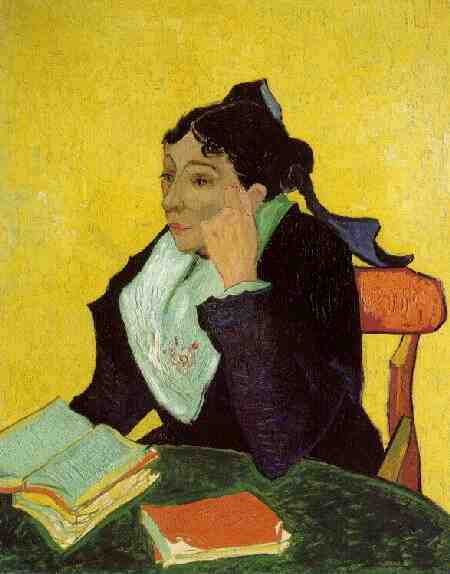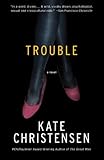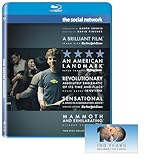
 I was recently reading Paper Towns by John Green, and the young characters happened upon John Coltrane’s A Love Supreme on vinyl. One of them was unfamiliar with Coltrane, which prompted his friend to say, “Trane’s playing is literally the most convincing proof of God’s existence I’ve ever come across.” The next day I was listening to A Love Supreme at my desk over and over for hours.
I was recently reading Paper Towns by John Green, and the young characters happened upon John Coltrane’s A Love Supreme on vinyl. One of them was unfamiliar with Coltrane, which prompted his friend to say, “Trane’s playing is literally the most convincing proof of God’s existence I’ve ever come across.” The next day I was listening to A Love Supreme at my desk over and over for hours.
It’s not the first time a work of art had steered me towards something new. After I read The Hare with the Amber Eyes, I went to the Art Institute to see a Renoir that one of the book’s (real-life) characters had owned. And I somewhat blame my penchant for living on a dime in small, urban apartments by how taken I was, as a 14-year-old living in Indiana, by that enchanting 90-second opening of An American in Paris.
So I put the question out to my Millions colleagues: What works of art have you been introduced to by other works of art? The books, music, and films we love can be like trusted friends, recommending new authors or introducing us to kimchi. We all know that art changes lives in major ways, but how has it changed your life in minor ways?
— Janet Potter

Edan Lepucki: 
 Literature doesn’t often lure me to other art, though I am comfortable blaming The Snowy Day by Ezra Jack Keats for stoking my childhood dream to live in an apartment building. How exotic and mysterious! (Because I grew up in L.A., snow seemed downright impossible, and I didn’t even think to long for it.) I once (er, twice) put ice cream in my coffee after reading Charles Baxter’s The Feast of Love; in it, the coffee shop owner Bradley talks about how the sweet concoction brightens your day — it does. I have made tacos after reading Kate Christensen’s Trouble, and I’m looking forward to following recipes from her forthcoming book, which is, fittingly, a food memoir called Blue Plate Special: An Autobiography of My Appetites. If I ever have a real down-and-out nervous breakdown,I plan to spend my nights sleeping on a chaise lounge by my swimming pool (which I shall also procure), a la Maria in Joan Didion’s Play It As It Lays.
Literature doesn’t often lure me to other art, though I am comfortable blaming The Snowy Day by Ezra Jack Keats for stoking my childhood dream to live in an apartment building. How exotic and mysterious! (Because I grew up in L.A., snow seemed downright impossible, and I didn’t even think to long for it.) I once (er, twice) put ice cream in my coffee after reading Charles Baxter’s The Feast of Love; in it, the coffee shop owner Bradley talks about how the sweet concoction brightens your day — it does. I have made tacos after reading Kate Christensen’s Trouble, and I’m looking forward to following recipes from her forthcoming book, which is, fittingly, a food memoir called Blue Plate Special: An Autobiography of My Appetites. If I ever have a real down-and-out nervous breakdown,I plan to spend my nights sleeping on a chaise lounge by my swimming pool (which I shall also procure), a la Maria in Joan Didion’s Play It As It Lays.
Sonya Chung: 
 My excuse is that I went to boarding school. We lived in a small New England town, and we had no television. This was during the late 80s, and pop culture essentially passed me by, especially music (I have not, to this day, seen MTV). Ever since, it’s been a kind of effort to connect with music, to organically happen upon what I like and want to listen to.
My excuse is that I went to boarding school. We lived in a small New England town, and we had no television. This was during the late 80s, and pop culture essentially passed me by, especially music (I have not, to this day, seen MTV). Ever since, it’s been a kind of effort to connect with music, to organically happen upon what I like and want to listen to.
More often than not, it’s happened through film. I found Bonnie “Prince” Billy through the film Old Joy, The Cranberries via Wong Kar-wai’s Chungking Express, Aimee Mann via Magnolia, John Legend and The Fugees via Dave Chappelle’s Block Party, Cat Stevens via Harold and Maude, Dianne Reeves via Good Night and Good Luck. I started listening to Eminem after 8 Mile, Pearl Jam after seeing Cameron Crowe’s Pearl Jam Twenty, JT after The Social Network, more Bob Marley after seeing Marley, Bill Withers after Still Bill. It’s weird, I know — late to the party, possibly diluted, like reading the book after the movie comes out (and I haven’t even mentioned all of the music that I heard first on Glee). I suppose it’s my later-life version of that contextual thing that happens in youth: every song reminds you of a memorable night, or person, or emotion, and the music becomes a part of you, because you didn’t just listen to it, you experienced it; which is just how music, or a musician, sparks something for me through the medium of film — as an experience, a sense of interest or connection, that bears exploring. With good music, I figure, the party goes on; better late than never.
Nick Moran: 
 Maybe I’m too suggestible, but I’ve a habit of absorbing bits of books I read. I used to think it was like literary osmosis — natural, spontaneous — but I’ve since noticed a primary trigger: food. In this respect, perhaps it’s more like literary Inception — involuntary, unconscious. Food references grab my attention even when they’re wildly inappropriate. I bought a doughnut right as I started reading Skippy Dies. I ordered fugu twice in Japan because I read People Who Eat Darkness on the plane over. I’ve tried to read on a full stomach, but it does me no good. Months later, these references might come back to me. It’s been over two years since I read Origins, but I’m still near-manic when I see pregnant women in public. Eat more salmon! I wish I could scream. (I’ve since disbarred myself from reading about childbirth.) The other day I finished reading The Westies, T.J. English’s salacious overview of Manhattan’s Irish mafia, and now I’m trying to eat a meal at all of the bars mentioned. Sometimes I reflect on this development shamefully. I really want to eat a meal where Mickey Featherstone shot a guy? And yet there’s nothing I can do. I am too easily swayed. I am biddable. One thing I know: it’ll get worse before it gets better. Next I’m reading The Master and Margarita. I’m told there are pickles. I’m told there are sausages.
Maybe I’m too suggestible, but I’ve a habit of absorbing bits of books I read. I used to think it was like literary osmosis — natural, spontaneous — but I’ve since noticed a primary trigger: food. In this respect, perhaps it’s more like literary Inception — involuntary, unconscious. Food references grab my attention even when they’re wildly inappropriate. I bought a doughnut right as I started reading Skippy Dies. I ordered fugu twice in Japan because I read People Who Eat Darkness on the plane over. I’ve tried to read on a full stomach, but it does me no good. Months later, these references might come back to me. It’s been over two years since I read Origins, but I’m still near-manic when I see pregnant women in public. Eat more salmon! I wish I could scream. (I’ve since disbarred myself from reading about childbirth.) The other day I finished reading The Westies, T.J. English’s salacious overview of Manhattan’s Irish mafia, and now I’m trying to eat a meal at all of the bars mentioned. Sometimes I reflect on this development shamefully. I really want to eat a meal where Mickey Featherstone shot a guy? And yet there’s nothing I can do. I am too easily swayed. I am biddable. One thing I know: it’ll get worse before it gets better. Next I’m reading The Master and Margarita. I’m told there are pickles. I’m told there are sausages.
Hannah Gersen: 
 Several years ago, I fell under the spell of the poet Forrest Gander’s novel, As A Friend, which tells the story of an intense and ultimately tragic friendship between two men. At the center of the story is a charismatic young poet, Les, who everyone in the novel falls in love with, and who I quickly fell in love with, too. Some reviewers suggested that Les was based on the poet Frank Stanford, so I decided to track down some of his poems — it was my way of getting more of the Les character. His poems are intense and cinematic, full of dialogue and dialect, quick cuts and sneaky images. Death lurks at the edge of everything Stanford writes, but in his poems death is like a movie villain — you get a little thrill from seeing him.
Several years ago, I fell under the spell of the poet Forrest Gander’s novel, As A Friend, which tells the story of an intense and ultimately tragic friendship between two men. At the center of the story is a charismatic young poet, Les, who everyone in the novel falls in love with, and who I quickly fell in love with, too. Some reviewers suggested that Les was based on the poet Frank Stanford, so I decided to track down some of his poems — it was my way of getting more of the Les character. His poems are intense and cinematic, full of dialogue and dialect, quick cuts and sneaky images. Death lurks at the edge of everything Stanford writes, but in his poems death is like a movie villain — you get a little thrill from seeing him.
Before reading As A Friend, I’d never heard of Stanford, but I soon learned that he was a favorite among poets, a cult figure who produced seven volumes of poetry before killing himself a few days before his 30th birthday. He grew up in Memphis and the Ozarks of Arkansas, an isolated mountain region, and his poems seem to come from a secret pocket of America. Stanford’s strangest and possibly most famous work is a long, messy epic called The Battlefield Where The Moon Says I Love You. I bought a copy of it, but admit I have never sat down and tried to read the whole thing in earnest, partially because it is so long (over 15,000 lines), but also because I think it might induce delirium. One day I’ll read it — actually, probably one night — but until then I am happy to reread Stanford’s shorter poems, as well as Gander’s As A Friend.
 Elizabeth Minkel: I was eighteen. I suppose that’s as good an excuse as any. But I found myself, just before Christmas my freshman year, making plans to leave a cloistered liberal arts college in New England and head to New York. To study jazz. Jazz. There might have been a guy involved. But by then, my obsession with the music had overshadowed any of that — I was listening to it constantly, reading about it and puzzling over it and romanticizing it, wasting all of my money at the used CD shop in town, until one day, I popped into the used bookstore across the street and found the book. I’d never heard of Geoff Dyer, funny to think of that now, but the title was enough: But Beautiful: A Book About Jazz.
Elizabeth Minkel: I was eighteen. I suppose that’s as good an excuse as any. But I found myself, just before Christmas my freshman year, making plans to leave a cloistered liberal arts college in New England and head to New York. To study jazz. Jazz. There might have been a guy involved. But by then, my obsession with the music had overshadowed any of that — I was listening to it constantly, reading about it and puzzling over it and romanticizing it, wasting all of my money at the used CD shop in town, until one day, I popped into the used bookstore across the street and found the book. I’d never heard of Geoff Dyer, funny to think of that now, but the title was enough: But Beautiful: A Book About Jazz.
I read it without stopping; I took it all in one breath. It’s as uncategorizable as anything Dyer’s ever written, but the back cover bills it as a series of vignettes, and that’s good enough: the stories are meant as echoes of their subjects’ music: Lester Young, Charles Mingus, Thelonious Monk. It was the first one, about Lester Young — “He was disappearing, fading into the tradition before he was even dead. So many other players had taken from him that he had nothing left” — that got me. By the end, I was gone. But that was the funny thing: this book did the exact opposite of what I’d meant it to do when I’d picked it up. But Beautiful knocked my world back into orbit: it reminded me that I’d spent most of my life deeply enamored of books. This is the book that made me want to write — write anything at all. By the spring, I was an English major.
In the comments: Tell us about works of art that introduced you to other works of art.
Image Credit: Wikipedia








